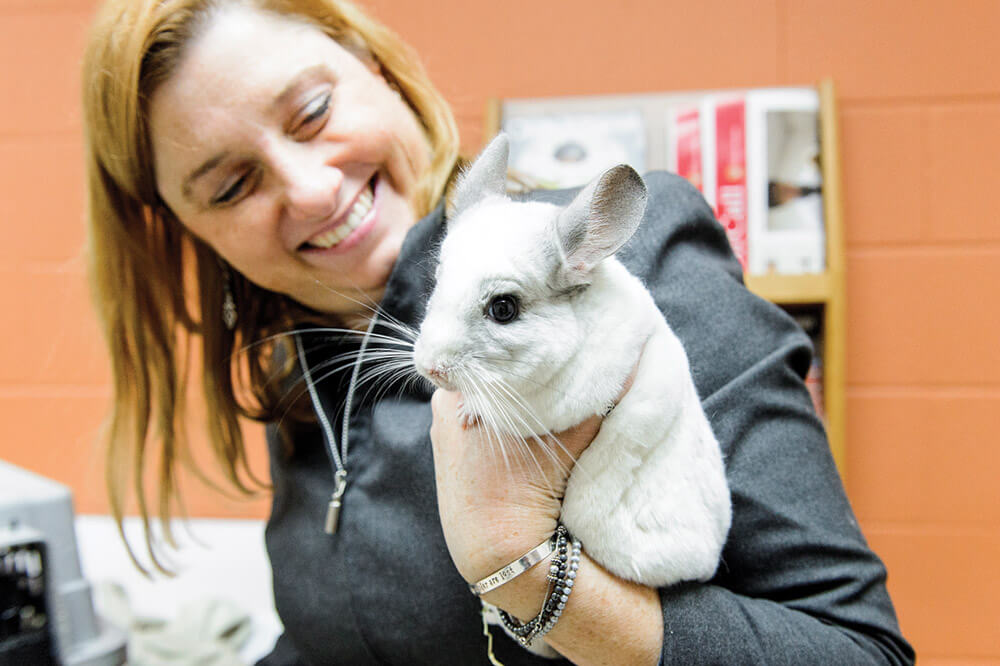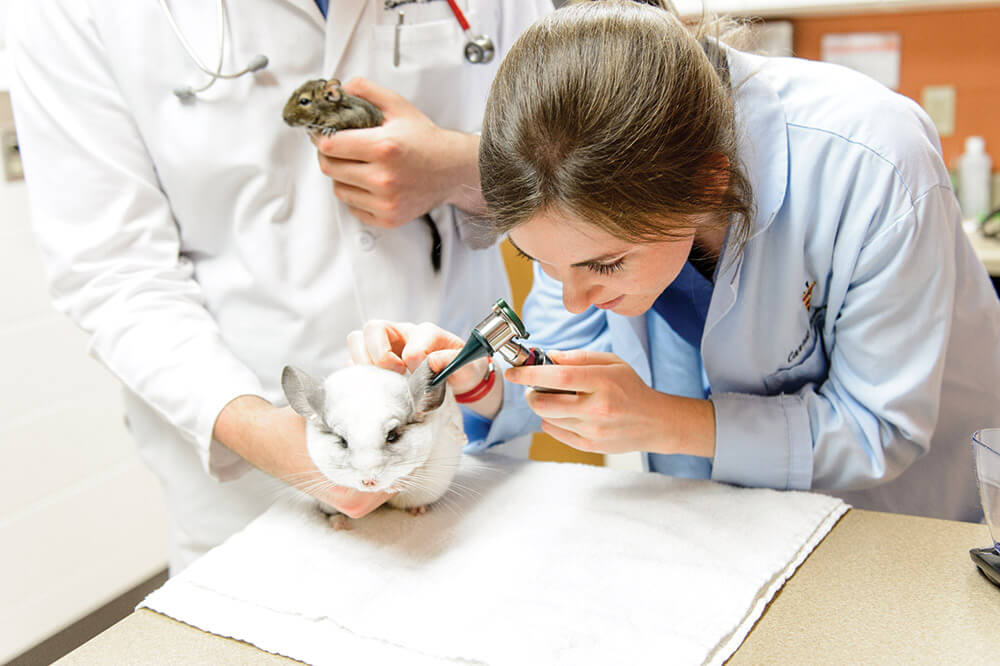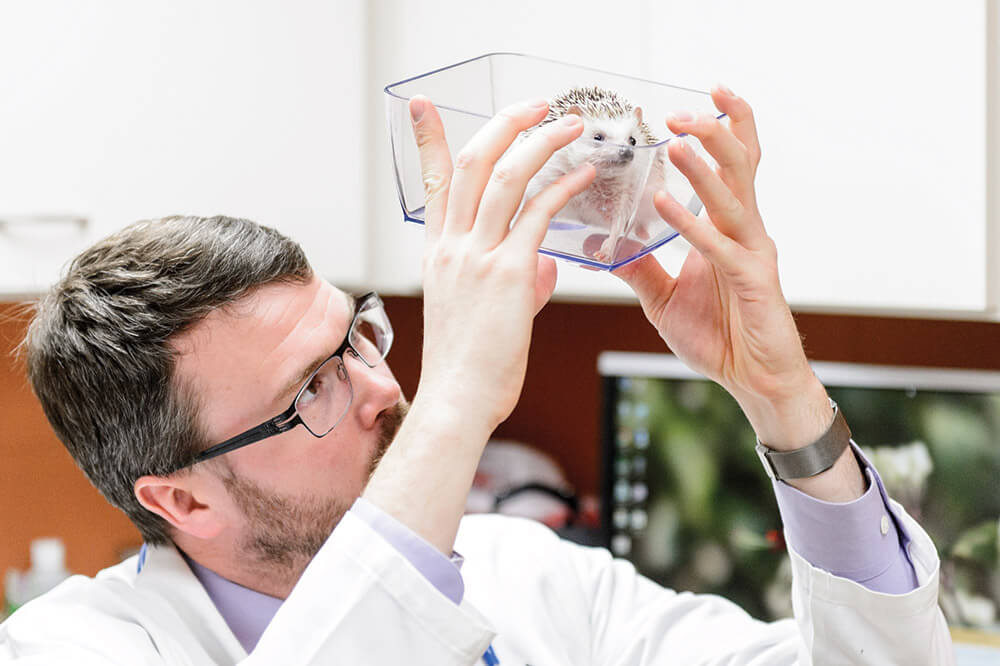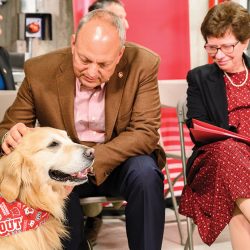Anteaters to Zebra Fish

UW Veterinary Care staff and specialists serve a growing number of exotic-pet owners. Melanie Conklin relies on the clinic for the care of her animal menagerie, including this chinchilla, called Chinicula, and a hedgehog, named Hogmanay.
A UW service makes sure rare and wonderful species are in good hands.
When Hogmanay the hedgehog encounters an unfamiliar situation, he usually curls himself into a spiny little ball. But during a recent visit to UW Veterinary Care, the teaching hospital at the UW School of Veterinary Medicine, he’s all curiosity, exploring the exam room with a flickering nose and dark, darting eyes.
Hogmanay is at the clinic to have a few skin lesions evaluated. For moral support, his owner, Melanie Conklin MA’93, has a few of his rodent pals in tow, including a puffy white chinchilla who lifts his forelimbs when he wants to be held, and a fidgety brown degu with a penchant for turning straw bedding and drinking water into cage sludge.
Conklin is part of a growing group of exotic-pet owners, and her small menagerie represents only part of the species mix. According to the 2012 U.S. Pet Ownership and Demographics Sourcebook, 20 percent of American households own pets other than cats or dogs, including birds, fish, and exotic or specialty animals, a category that encompasses reptiles, amphibians, small mammals, marsupials, primates, invertebrates, and more.
The UW Veterinary Care Special Species Service — part of the only Midwestern veterinary medical hospital with board-certified zoological medicine specialists on duty year round — has seen more than its fair share of these creatures. Although the majority of the caseload is more predictable, in recent years staff members have cared for a baby lizard weighing less than a gram, a lumbering one-hundred-pound African spurred tortoise, and even rarer patients, such as ring-tailed lemurs, a red panda, and an elusive harpy eagle.
Just like their dog and cat counterparts, exotic animals need annual wellness exams, says Christoph Mans, clinical assistant professor of zoological medicine. And the clinic supports specialists in areas ranging from dentistry to radiology when the animals need specialized care.
The benefits of this expertise extend from the clinic to the curriculum. Veterinary medical students complete a two-week rotation with the service in their fourth year, but their education about exotic animals begins in the classroom. Mans and Kurt Sladky ’81, MS’88, DVM’93, clinical associate professor of zoological medicine, teach a course that includes live lab sessions on how to handle and examine animals students will likely encounter if they go into practice. The two also train several zoological medicine residents and work in the lab to devise ways to manage pain in zoo, wildlife, and exotic pet species.
Conklin’s experience with the clinic began five years ago when one of her hedgehogs went into hibernation, a condition that can be fatal for domesticated versions of the little mammals. During a late-night phone call, she recalls, “They told me the steps for waking up a hedgehog properly. … They even called the next day to make sure everything was okay.”
As for Hogmanay’s recent visit? Mans determines that his lesions are not cause for serious concern, and prescribes a medication to help clear up the hedgehog’s skin.
Published in the Spring 2015 issue





Comments
No comments posted yet.